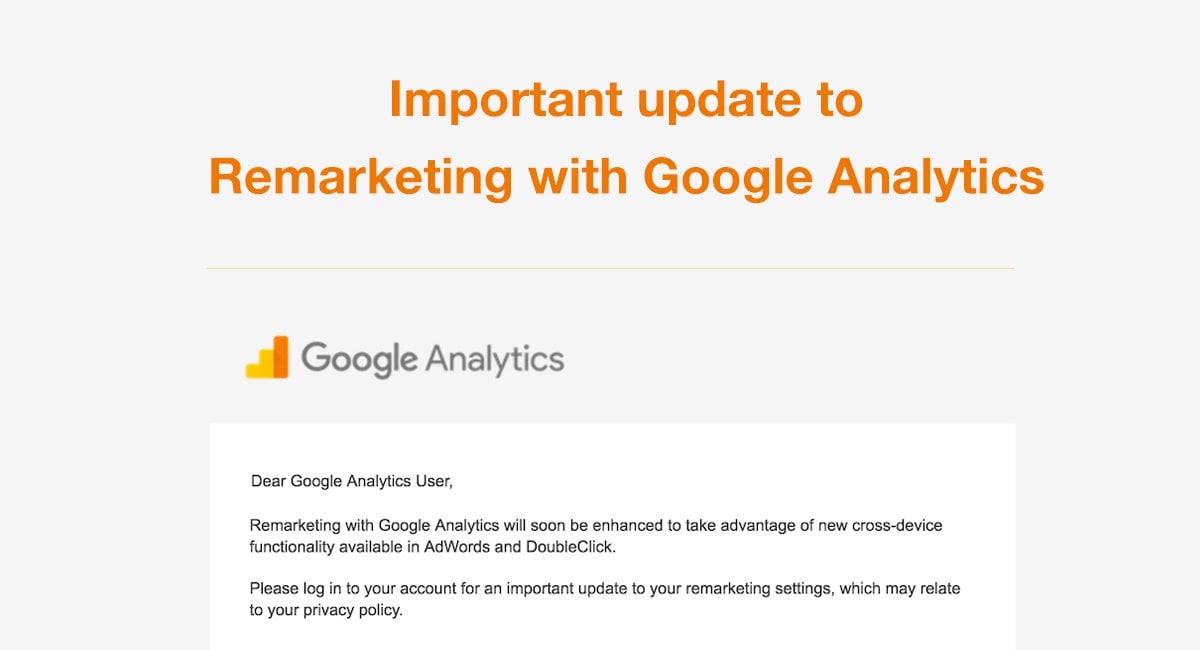Remarketing in Google Analytics: Transforming Site Visitor Data Into Sales
The capacity to precisely target audiences based on their actions and choices opens doors to a realm of possibilities, driving organizations towards lasting development and success. Via a meticulous analysis of visitor actions and a tailored remarketing approach, businesses can navigate the digital landscape with precision and skill, unraveling the real potential of their on the internet existence.

Advantages of Remarketing in Google Analytics
Remarketing in Google Analytics uses services the possibility to reconnect with site site visitors who have revealed rate of interest in their service or products, therefore increasing brand presence and conversions. By leveraging this effective tool, services can remain top-of-mind with potential clients that have already involved with their site. One of the vital advantages of remarketing is the capability to target certain target markets based on their habits on the internet site, allowing for customized messaging and tailored marketing campaign.
In addition, remarketing in Google Analytics can aid businesses increase their conversion rates by re-engaging with visitors who might not have purchased or completed a preferred action on the site during their first check out. This targeted approach can lead to higher conversion rates and ultimately drive more sales. Additionally, remarketing can additionally aid services develop brand commitment and trust fund by keeping consistent communication with possible customers throughout their buying journey.
Establishing Remarketing Projects
When initiating remarketing projects in Google Analytics, businesses require to meticulously plan and apply calculated targeting techniques to efficiently reach their desired audience. The primary step in setting up remarketing projects is to define clear goals. Whether the goal is to boost web site conversions, advertise particular items, or raise brand understanding, having a well-defined goal will certainly guide the entire campaign technique.
Following, companies need to create audience listings based upon particular criteria such as website site visitors, individuals who deserted their purchasing carts, or those that interacted with specific content. These listings permit targeted messaging tailored per section of the target market, increasing the chances of conversion.

Last but not least, companies need to establish conversion tracking to gauge the success of their remarketing projects properly. By assessing the performance data, businesses can enhance their projects for far better outcomes and greater ROI.
Leveraging Target Market Division for Remarketing
Utilizing target market segmentation is an essential strategy for boosting the effectiveness of remarketing campaigns in Google Analytics (What Is “Remarketing” In Google Analytics?). By separating your website visitors into unique teams based on their habits, demographics, or rate of interests, you can tailor your remarketing initiatives to target these particular sections with appropriate advertisements. Target market division permits you to develop more customized and targeted projects, increasing the chances of re-engaging site visitors and driving conversions
Segmenting your target market enables you to deliver customized messaging that resonates with each team's choices and requirements. You can produce separate remarketing checklists for individuals who abandoned their shopping carts, saw specific item web pages, or downloaded a particular source. By comprehending the different inspirations and interests of these sectors, you can craft engaging ad creatives that are most likely to capture their interest and prompt them to review your site.
Furthermore, target market segmentation also assists you optimize your ad spend by concentrating on high-value sections that are more probable to transform - What Is “Remarketing” In Google Analytics?. By examining the efficiency of each sector, you can designate your budget plan better and optimize the return on your remarketing investment
Studying Remarketing Efficiency Metrics
To effectively review the success of remarketing campaigns in Google Analytics, assessing essential efficiency metrics is vital. Metrics such as click-through rate (CTR), conversion rate, cost per purchase (CPA), and return on advertisement invest (ROAS) offer important understandings into the performance of your remarketing initiatives. CTR indicates the percent of individuals that clicked on your advertisement go after seeing it, mirroring the ad's relevance and charm to your audience. Conversion price measures the percentage of users that finished a desired action, such as buying, after clicking your ad. CPA aids determine the price of acquiring a customer with your remarketing campaign, while ROAS analyzes the income created for each and every buck invested on marketing. By analyzing these metrics, you can identify areas for enhancement, enhance your projects, and designate budget better to take full advantage of the ROI of your remarketing methods in Google Analytics.

Finest Practices for Remarketing Success
Building on the foundation of evaluating remarketing efficiency metrics, implementing finest methods is key to achieving success in your remarketing undertakings. One essential finest practice is to section your target market properly. By visit this web-site dividing your target market based on their actions, demographics, or interests, you can create tailored messaging that reverberates with each section, eventually increasing the likelihood of conversion. In addition, make certain that your remarketing advertisements are visually enticing and consist of compelling phone call to activity. Catching the customer's attention and triggering them to take the desired activity is vital.
Furthermore, regularity covering is important to prevent ad tiredness. Pestering customers with the same ad continuously can lead to nuisance and lowered performance. Testing different advertisement positionings, layouts, and messages is also essential. A/B testing permits you to recognize which approaches produce the most effective results his comment is here and enhance your projects appropriately. Finally, monitor your campaigns on a regular basis, assess the information, and make data-driven choices to continually improve your remarketing efforts for maximum impact.
Conclusion
To conclude, remarketing in Google Analytics supplies organizations the possibility to leverage site visitor information to enhance sales and drive conversions. By using audience division, evaluating efficiency metrics, and applying finest practices, organizations can customize their remarketing initiatives to target high-value segments properly. With engaging advertisement creatives and conversion tracking, organizations can develop brand commitment and trust fund, inevitably maximizing the influence of their advertising strategies.
Via a careful analysis of site visitor activities and a tailored remarketing approach, businesses can navigate the digital landscape with accuracy and finesse, unraveling the real capacity of their online presence.
One of the key advantages of remarketing is the ability to target specific audiences based on their habits on the site, enabling for customized messaging and tailored advertising projects.
Additionally, remarketing can likewise assist organizations build brand name loyalty and trust by preserving regular communication with prospective customers throughout their acquiring journey.
Metrics such as click-through rate (CTR), conversion price, cost per purchase (CERTIFIED PUBLIC ACCOUNTANT), and return on ad spend (ROAS) supply beneficial insights into the efficiency of your remarketing initiatives. By examining these metrics, you can recognize locations for renovation, maximize your projects, and allocate budget much more properly to maximize the ROI of your remarketing strategies in Google Analytics.